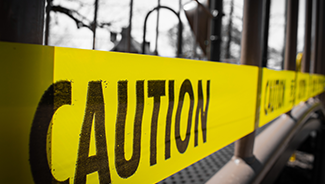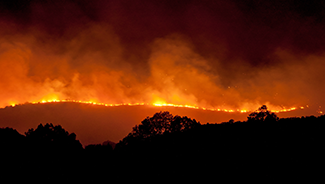
Disasters are a fact of life.
In most cases, they cannot be predicted, only planned for. Floods, wildfires, earthquakes, hurricanes, global pandemics, cyber threats—they all have the power to devastate a business. And while you may not be able to prevent these events, you
can take steps to protect your company from being seriously impacted if disaster strikes.
At Mutual of Enumclaw, we recommend grounding your disaster preparedness in a thoughtful business continuity plan (BCP) and disaster recovery plan (DRP). In the heat of an actual emergency, you want to know that all of the necessary thinking and planning
have been done. It’s vital that next steps have been established and shared with employees and contractors—before the event.
This is important because speed is critical in these situations when it comes to responding. Creating, disseminating, and practicing your plan is the best strategy for minimizing the effects of any disaster scenario.
Business Continuity vs. Disaster Recovery
Let’s start with the terminology. Here’s a good way to think about the differences between a BCP and a DRP:
• BCP – A business continuity plan usually refers to your planned response to a real-world or virtual event capable of disrupting the operation of the business. Think natural catastrophes as well as cases of internet
hacking.
• DRP – A disaster recovery plan is generally intended to articulate how you propose to resume operations after the event. It is commonly more focused on your company’s IT infrastructure and applications.
A BCP and DRP do share a common objective: Protect the long-term integrity of your company. Some larger organizations hire risk managers or consultants to guide them in this effort. But it may not be necessary, especially for small businesses that
can undertake the analysis and planning on their own. Either way, many companies today are electing to combine their BCP and DRP into a single plan.
The Basics of an Effective BCP/DRP Plan
How do you get started? We know it can be a daunting exercise, especially given what’s at stake. That’s why we’ve developed a high-level checklist to help you prep your business by building your own consolidated BCP/DRP plan.
The items making up the list address 10 key ingredients our experience has taught us are fundamental to planning for a possible emergency.
- Build a dedicated team: This team will tackle creation of the plan. Consider formulating the team with representatives from across the organization as this can be valuable when it comes to circulating the details later.
- Audit company readiness: Once the team’s in place, take a look at how prepared the company is for a disaster. It’s crucial to reach out to your insurance agent to discuss your protection—both your current
policies and any additional coverage you may need.
- Address communications: Staying in touch is crucial. How will you connect with staff, vendors, and others when existing tools and systems may be down or otherwise compromised?
- Conduct employee training: Your employees will need to be prepped and educated on the plan, including their roles and responsibilities. Note as well that you and your team could be personally impacted. Establish a plan for
reduced operations to allow you, your team, and your families to take the necessary time to deal with impacts.
- Evaluate environmental hazards: Think about including an assessment of your workspaces for possible hazards. This could be anything from toxic molds to wood smoke to airborne pathogens.
- Practice the procedures: When it comes to the plan itself, it’s recommended to practice the safety procedures on a regular schedule so that everyone is ready.
- Safeguard technology and data: What do you need to do to protect your systems from damage and avoid the loss of vital files? After your people, these are your most important assets, and you’ll want to ensure a protocol
is in place to protect them.
- Check with your supply chain: This is a good time to check in with your supply chain about how you’ll avoid as much disruption as possible in the event of a disaster. You might also ask key vendors to share their BCPs
and DRPs so that you’re prepared if they have to close their doors because of an emergency.
- Find a backup location: As your normal office or workspace may be unavailable or unsafe, it’s critical to identify a second site where you can temporarily move operations to, should it prove necessary.
- Test and refine: With the planning done, you want to put your BCP and DRP to the test. Conduct a practice drill to see if there are any holes or issues. Use the results to tighten and improve your plan.
Download the BCP/DRP Checklist
Disasters will happen. A simple scan of the headlines proves that. We hope that your business is never on the receiving end. But you’ll be glad you’re prepared if one day it is.
Put your business in the best position to successfully weather a disaster by downloading and implementing the step-by-step BCP/DRP checklist. What items on the list have you not addressed yet?



